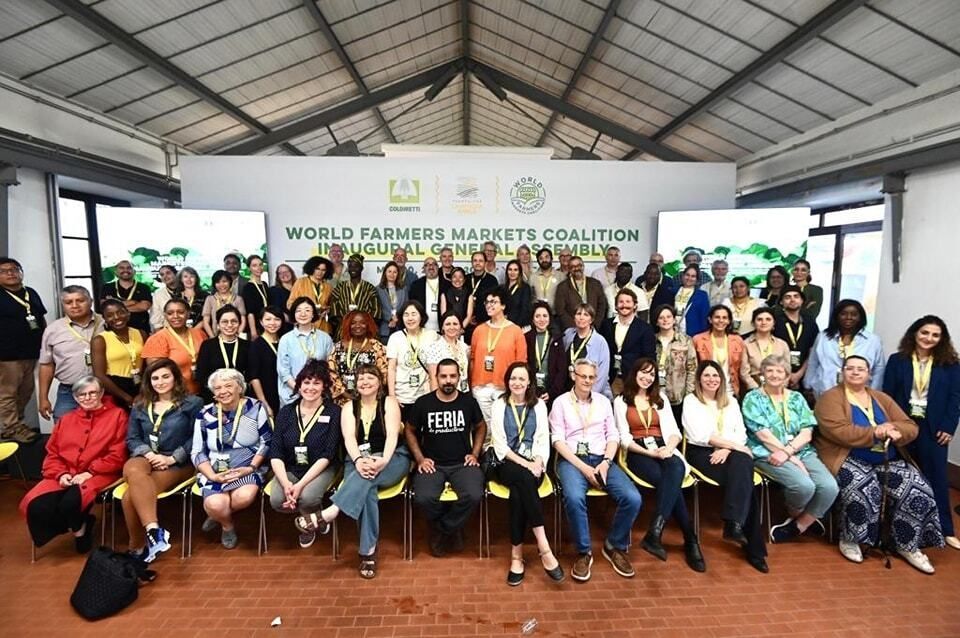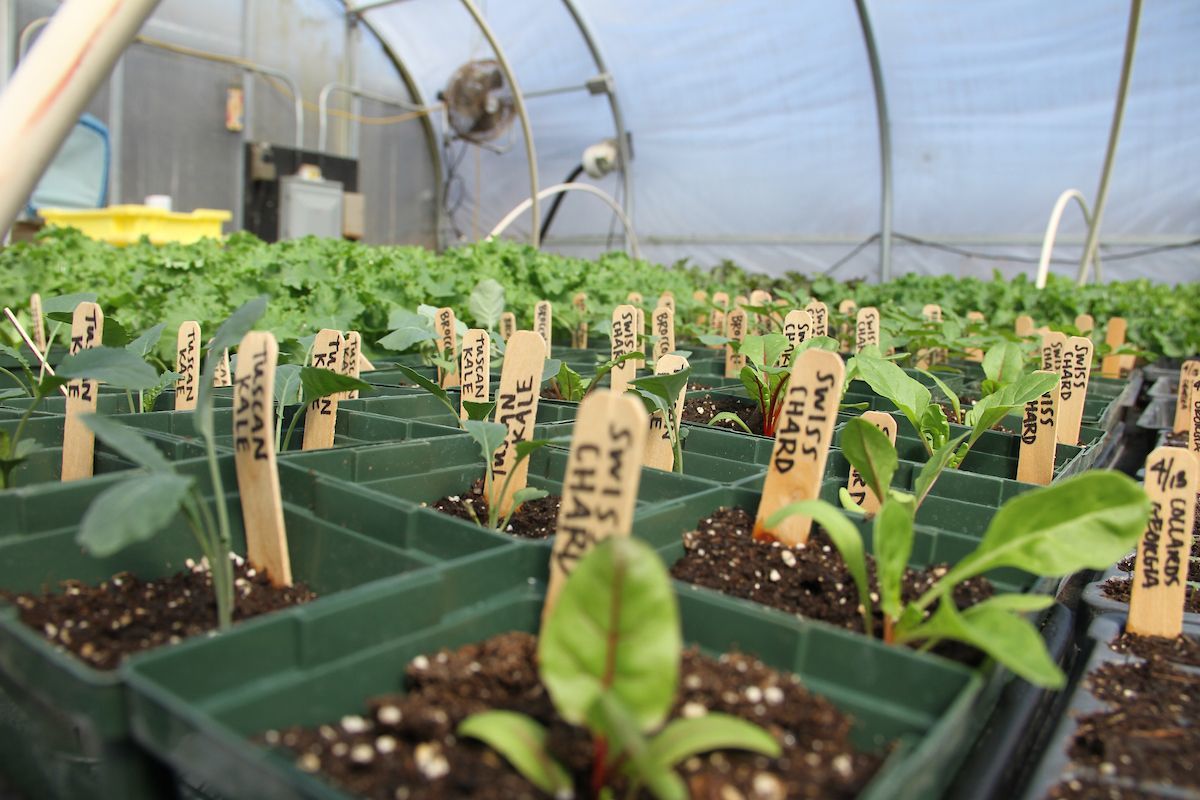
If there’s ever been a question about whether farmers markets play an important role in building just, healthy regional food systems, the newly-formed World Farmers Market Coalition (WFMC), which just held its inaugural assembly in Italy a couple of weeks ago, represents an emphatic and inspiring affirmative answer. The assembly, the first of its kind, attracted market managers and organizers from across the globe to come together to ensure markets continue to strengthen as we strive toward more resilient food systems.
The WFMC’s roots lie in the work of the Coldiretti Foundation, a farmers union founded in Italy in 1944. Starting in 2018, this powerful entity opened hundreds of indoor, ‘zero km’ markets all over Italy, started an academy to help train market managers, and transformed direct farm sales across its home country. The tangible benefits of bringing farmers together and unifying market operations were undeniable, leading Carmelo Troccoli, Director General of the Fondazione Campagna Amica (a program of the Coldiretti Foundation), to wonder if a global coalition could reap similar value. He teamed up with my friend and colleague Richard McCarthy—who has spent his career supporting markets and building regional food systems—to create the WFMC, for which McCarthy now serves as President.
I had the privilege of attending this first assembly with hundreds of delegates from the coalition (representing over 50 countries and 20,000 markets). The gathering, anointed by several government officials who gave lengthy talks about their country’s food achievements, more than met the objective of bringing together market managers, organizers, and supporters to swap stories, ideas and solutions during talks, panels and (really great) meals.
The most inspiring part of the three days we spent together was just learning about the different types of markets around the world. They all face similar challenges, but innovate in wonderfully diverse ways. The Italians and Egyptians were talking to the Americans about the ‘double up’ programs and ideating about how to address food insecurity through their farmers markets. The Brazilian organization Junta Local’s representative talked about how their weekly market has turned into a sort of community block party with great success. One woman shared that she is considering a second, afternoon market for small wholesale that I thought could be worth trying in New York’s Hudson Valley. Attendees shared information about which spaces have been most successful, about what makes a good market manager (and how best to retain them), and the pros and cons of outside versus indoor markets.
Direct sales (farmers selling direct to consumers) are critical to the success of regional food. Glynwood currently helps farmers with this type of marketing in a few different ways: through our Incubator program that serves farms who are mostly using direct sales models; the creation of a coalition of farmers that use CSA or farmshare for distribution; and aggregating and selling local grains and products from regional producers at our own farm store and CSA program, to name a few.
But, as a board member of my community’s local farmers market, and as Glynwood explores ways to advance direct sales in the Hudson Valley, I was keenly interested to hone in on the role of farmers markets specifically.
Here are a few of my takeaways from time spent with some of the masters of farmers markets from around the world, and some inspiration taken from the comprehensive report that the WFMC distributed at the conference (available here).
- Location is challenging and totally critical. Indoor markets in a dedicated space are successful for many different reasons, but obviously hard to come by.
- Infrastructure — such as ready-made tents, display tables, bathrooms, etc — is also a major obstacle. Markets that have a dedicated space and can invest in infrastructure inevitably draw more vendors and create efficiencies.
- Branding is critically important. Recognizable, big, clear, iconic messaging seems to have a direct impact on a market’s success.
- The practice of centralizing the management of several markets (like NYC’s Greenmarkets under GrowNYC) is growing and has some clear advantages.
- Managers need training and there are few opportunities to do so. I learned there are resources available online in the US and a function of WFMC will be to add more and similar resources crowdsourced from its members.
- Double Bucks (where food assistance dollars are matched by farmers market vouchers 1:1) work, and more markets need to accept SNAP. For me, one key recognition is that in the Hudson Valley, many of our markets are in affluent areas that serve those communities. More markets in less-resourced communities with proper support is a real opportunity.
- There needs to be more funding from government sources (universally agreed upon).
- Coalitions of market managers are needed at every scale (there is not one currently in the Hudson Valley, although there is a state association).
- Markets can be too expensive for farmers, so they need to be very successful at attracting customers to ensure a sustainable return (see this recent Wall Street Journal article).
What’s clear is that farmers markets are not only critical for robust regional food systems, they are culturally important. Richard kept saying that markets are “animated public spaces” where “good things happen.” Fresh, healthy food is distributed, of course, but there is so much more. People meet, share stories, catch up, swap recipes, encourage each other, help each other. It is one of the most important ways we can create common ground.
It is an honor to experience this at my market on Saturdays, but now being able to stand back and think about the fact that this type of effort is happening in spaces all over the globe makes me optimistic for the kind of future Glynwood and our like-minded global colleagues are creating.

